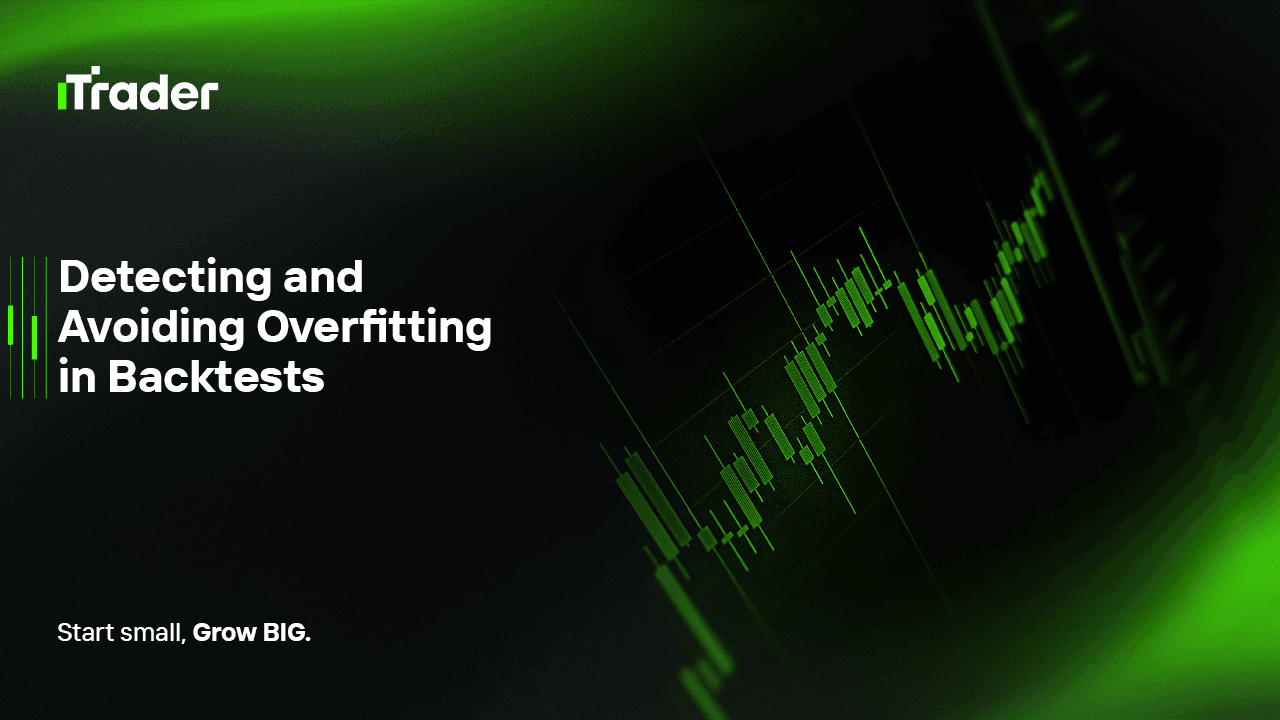2025-09-01
Backtesting is one of the most powerful tools available to traders and system developers. It allows you to evaluate whether your trading idea would have worked in the past, giving a degree of confidence about how it might perform in the future. However, backtesting also carries a hidden danger: overfitting.

Overfitting occurs when a strategy is optimized to perform exceptionally well on historical data but fails when exposed to new market conditions. For prop traders, whose capital allocation and career opportunities depend on proving the robustness of their strategies, avoiding overfitting is not just a technical detail—it is a survival necessity.
This blog will examine the nature of overfitting in backtesting, why it poses serious risks, and how prop traders can systematically protect themselves from this pitfall.
Overfitting happens when a model or trading system becomes overly tuned to past data. In practice, this means your strategy is not capturing genuine market structure but rather random noise.
For example, imagine you design a moving average crossover system and then spend hours adjusting parameters until the equity curve looks perfect. If the rules are too specific—say, a 47-period MA crossing a 113-period MA only under certain market hours—the system might fit past data exceptionally but will likely fail in live markets.
Overfitting gives a false sense of security. The equity curve may look smooth, the drawdowns minimal, and the profit factor high, but all of it is an illusion built on hindsight.
For independent traders, overfitting is already a risk. For prop traders, however, the stakes are much higher:
In short, overfitting is not just a statistical issue. It can destroy a trader’s chance at a career within prop trading.
Recognizing overfitting early can save time and resources. Some warning signs include:
If a backtest seems “too good to be true,” it probably is.
The more parameters your strategy has, the more opportunities for overfitting. Simple strategies with clear logic tend to generalize better. For example, a moving average crossover with one or two filters is less prone to overfitting than a system with ten interdependent conditions.
Always divide your data into in-sample (for model development) and out-of-sample (for validation). A robust system should perform reasonably well on both. If it collapses out-of-sample, it is overfit.
Instead of a single backtest, perform multiple rolling optimizations and validations. This simulates live conditions and shows how the strategy adapts across different market environments.
Every trading rule should have a rationale. For example, trend-following systems should work because of market momentum, not because “it looked good” in historical data. If you cannot explain why a rule works in economic terms, it is probably a curve-fit artifact.
Testing hundreds of indicators and parameter combinations increases the chance of finding a false positive. Limit the number of tests and ensure that results make sense outside of statistics.
Borrowed from machine learning, cross-validation splits data into multiple folds. Each fold is tested separately to see if performance is consistent. This reduces the likelihood of tailoring a model to one specific dataset.
Randomizing the order of trades in backtests helps reveal whether performance depends on a lucky sequence of wins and losses. If results remain stable under randomization, the system is more robust.
By resampling historical returns, bootstrapping allows you to see how sensitive the strategy is to variations in the dataset. Stable results indicate lower overfitting risk.
In algorithmic models, regularization techniques penalize complexity. This prevents the system from placing too much weight on minor historical anomalies.
Overfitting is not just a technical issue; it is also psychological. Traders often fall into these traps:
Being aware of these biases is the first step to avoiding them.
Prop traders can follow a structured workflow to reduce overfitting risk:
Prop firms don’t expect perfection. They expect robustness. This means:
The goal is not to eliminate all losing trades but to show consistent decision-making under varied conditions.
Overfitting in backtesting is one of the biggest threats to prop traders. A strategy that looks flawless on paper can quickly collapse in live trading, leading to wasted time, lost opportunities, and failed evaluations.
The solution is not to abandon backtesting but to use it wisely. By keeping strategies simple, validating them across different datasets, applying robustness tests, and grounding every rule in sound market logic, traders can avoid the trap of overfitting.
For prop traders, the ability to prove that your strategy can withstand real market conditions is the ultimate edge. A robust but imperfect system will always outperform a fragile curve-fitted one in the long run.
© 2025 iTrader Global Limited|公司註冊編號:15962
iTrader Global Limited 註冊於科摩羅聯盟昂儒昂自治島穆扎穆杜 Hamchako,並受科摩羅證券委員會授權與監管。我們的牌照編號為 L15962/ITGL。
iTrader Global Limited 以「iTrader」為商業名稱經營,獲得從事外匯交易活動之授權。公司標誌、商標與網站均為 iTrader Global Limited 之專有財產。
iTrader Global Limited 的其他子公司包括:iTrader Global Pty Ltd,澳洲公司註冊編號(ACN):686 857 198。該公司是 Opheleo Holdings Pty Ltd 的授權代表(澳洲金融服務代表編號:001315037),Opheleo 持有澳洲金融服務執照(AFSL 編號:000224485),註冊地址為:Level 1, 256 Rundle St, Adelaide, SA 5000。
免責聲明:本實體並非本網站所交易金融產品之發行者,亦不對其負責。
風險提示: 差價合約(CFD)交易因槓桿效應具高度資本迅速損失風險,未必適合所有使用者。
參與基金、差價合約及其他高槓桿商品交易,需具備專業知識。
研究顯示,84.01% 的槓桿交易者最終蒙受損失。請務必充分了解相關風險,並在投入資金前確保自身已準備好承擔全部損失的可能性。
iTrader 特此聲明,對任何個人或法人因槓桿交易所導致之風險、損失或其他損害,概不承擔全部責任。
使用限制: iTrader 並不向法律、法規或政策禁止此類活動的國家或地區居民提供網站或服務。如您居住於限制使用本網站或服務之司法管轄區,您有責任自行確保遵守當地法律。